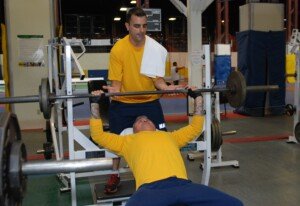
Bursitis doesn’t just strike old people; the young can get it too.
Bursa are the small sacs of fluid that help muscles slide easily over other muscles and bones.
Bursitis is when the bursa become inflamed, as a result of either overuse during sports or workouts, tasks around the house, or from running or jogging.
The pain often comes on within a few days of the offending activity.
The pain of bursitis can feel like the pain of tendonitis. An orthopedic specialist can make the right diagnosis.
Risk Factors for Bursitis
“Any overuse activities might cause tendonitis,” says Michael A. Schwartz, MD, an orthopedic surgeon with White Plains Hospital Physician Associates in NY.
“Also, any excessive leaning on certain body parts: most commonly on the knee or elbow.”
Prolonged leaning motions are commonly seen in gardening (knees), and reading a newspaper (elbows on the table).
Excessive elbow-leaning also occurs in some people who spend a lot of time at a computer. So you can see now how young adults can develop bursitis.
What sports or types of exercises can cause bursitis?
Dr. Schwartz says that many can lead to bursitis, “especially those that involve repetitive motions, such as tennis, golf, throwing sports, etc.”
Is bursitis curable? Or must the sufferer live with it permanently?
It’s curable.
Can supplements help?
Dr. Schwartz says there is “no data on supplements or certain foods that can help this. It is usually treated with activity modification and anti-inflammatory medicine.”
Home Treatment
Avoid the activity that caused the bursitis. The pain may go away in a few days to a few weeks. But don’t assume the problem is gone just because the pain is gone.
Merely resuming activity after staying away from it, is not enough to regain pre-injury status. You must strengthen and stretch the muscles around the injured joint.
You may also need to change the way you perform a strength-training routine that caused the bursitis.
For example, sometimes the entry and exit into a routine with dumbbells can add stress to the joints.

Often, people quickly lower the weights, and their arms just flop down with them, rather than a deliberate, controlled lowering. Sudden, abrupt movements can cause or prevent the healing of bursitis.
Another way of modifying the routine is to switch type of weights. For example, if using a barbell caused the injury, switch to dumbbells.
If flat-bench dumbbell presses caused it, then use an incline bench, and lighten the weights accordingly.

Ice. When there is pain, apply an ice pack for 10 minutes, once and hour for up to three days.
If pain persists, apply the ice for 15-20 minutes, but never more; and three times daily.
Though heat application may feel nice, remember that only ice will relieve inflammation and speed up healing.
It’s unlikely that bursitis pain will ever reach unbearable levels; thus, taking drugs only to numb the pain is not necessary.
In fact, masking the pain this way can lead to a false sense of healing, causing you to over-use the joint while it is still actually inflamed or injured.
Feeling the pain allows you to know where your limits are, as far as range of motion and exertion.
On the other hand, an anti-inflammatory can bring down inflammation, but keep in mind that inflammation can go away via a natural approach: avoiding the offending activity, applying ice, and the following guidelines.
When you’re not in pain, gently move the joint through full range of motion several times daily, to prevent stiffness.
A joint that becomes stiff from under-use, adds more pain to the problem and slows healing. In other words, total rest is a bad idea if you have bursitis.
You can gradually resume the offending activity, but start out with much lower weight — or in the case of a sport such as golf, a gentler approach. If it still hurts, use no weight, and just go through the motions.
For instance, if bench pressing caused the injury, you may need to initially just lie down and do pressing motions against the air, to reintroduce your injured joint to the act of bench pressing.
For golf or baseball, just go through the motions of swinging and throwing.
Make sure you strength-train to prepare your joint for eventual full-participation in your sport, and to help prevent a recurrence of bursitis.
If the problem was caused by excessive leaning on joints, then stop leaning on your joints.
Prevention of Bursitis
Always warm up prior to sports or workouts.
This means stretching the joint to be exercised, and gradually working up to high intensity if this is part of your regimen.
For example, do several sets of light bench presses, and a few medium sets, before piling on the weights. Stretch when you are done.
If you begin to feel any kind of pain starting, even if it’s a dull ache, immediately stop. Do not try to work through bursitis.
 Dr. Schwartz has previously worked as a team physician for high school, college and professional sports, and is the author of numerous scholarly research articles and chapters in orthopedic surgical textbooks.
Dr. Schwartz has previously worked as a team physician for high school, college and professional sports, and is the author of numerous scholarly research articles and chapters in orthopedic surgical textbooks.
 Lorra Garrick is a former personal trainer certified through the American Council on Exercise. At Bally Total Fitness she trained women and men of all ages for fat loss, muscle building, fitness and improved health.
Lorra Garrick is a former personal trainer certified through the American Council on Exercise. At Bally Total Fitness she trained women and men of all ages for fat loss, muscle building, fitness and improved health.

























